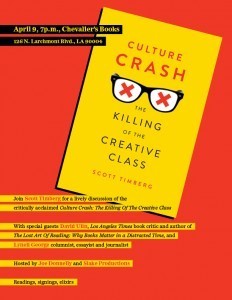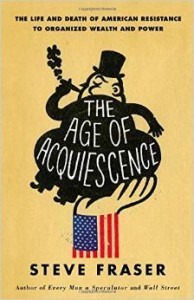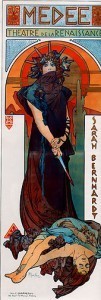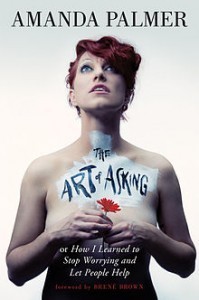Scott Timberg's Blog, page 15
April 9, 2015
Ranting and Rolling in Los Angeles
I’ll be at Chevalier’s Books in LA’s Larchmont Village neighborhood tonight, with the writers Lynell George, David Ulin and Joe Donnelly of the literary magazine Slake.
Be there or be square.
I’ll also be at the LA Times Festival of Books on Sunday April 19.
April 8, 2015
Poetry and Plutocracy
A NEW book of poems, Monetized, looks at our new Gilded Age, with its staggering extremes of wealth and poverty. The book is written by the New York journalist Alissa Quart, who has written three books, the most recent of which is Republic of Outsiders.
The New Yorker’s Joshua Rothman has a smart profile of Quart on the magazine’s site today. What she’s describing, she says, is not brand new, but it marks a disturbing and important shift: “Thinking about money used to be in the background, and now it’s foregrounded.”
The story continues:
A few of the poems in “Monetized” are about the obvious subject of gentrification—about walking around your old neighborhood and encountering, as Quart put it, a “Danish lady with blonde pigtails, an Uppababy, and shiny sweatpants,” where, twenty years ago, you might have met a leather daddy on his way to Rawhide. Quart longs for the chaotic, untidy, unpredictable New York of the seventies and eighties. But most of the poems pursue more elusive subjects: the hollow satisfactions of Internet culture (“ ‘What’s the point?’ seeps out / of that hyperlink”); the simultaneous pride and shame with w
hich we approach our own consumer identities (“Overnight, binging turned positive”); the commercialization of self-perfection, which gives each of us, in place of a super-ego, an “internal continuous / improvement consultant.” In many of them, Quart traces the influence of money-obsession on her own imagination. “When you write narrative nonfiction, the dream is to get into another person’s mind. With poetry, you’re always already in somebody’s mind—it’s just your own,” she said. “There’s that feeling where your inner life is shaped by financial concerns and values. You’re sort of self-objectifying.”
I’ve met Quart only once, but feel an eerie connection between her work and mine, as if she’d tapped into my thinking and translated it to the verse that I don’t know how to write. Monetized is well worth looking at for anyone who cares about poetry, the new plutocracy, or the invisible, psychological impact of the wealth economy.
April 7, 2015
Happy Birthday, Billie Holiday
TODAY would be the 100th birthday of one of the greatest musicians in history.
I’ve been watching this 1957 video of “Fine and Mellow” for more than 20 years now and continue to love it.
There are so many great musicians on this track, but let me point out that Holiday’s greatest-even musical partner Lester Young, plays tenor saxophone here. The melancholy and understated saxophonist may be my all-time favorite musician, and his late-’30s recordings with her are simply peerless. (Young also gave Holiday her famous nickname.)
For now, a happy 100th to Lady Day.
The Collapsing Fortunes of the Club Deejay
WHEN people try to destroy my argument about a crisis in culture, one of their most common tacks is to suggest that I’m describing just the fading of an old world — classical music, literary writing, print journalism and so on — that is being eclipsed as a new, more democratic pop-culture-driven world rises, bestowing its blessings on all of us.
But what I talk about, here and in my book Culture Crash, is an economic/ technological/ sociological cock-up that does not discriminate by genre lines or by high/ low delineations. The latest evidence of this is an online rant of a club deejay. Here’s a bit from “The Dead Art of DJing.”
There used to be this great middle ground, between basic bar nights and big festivals, where DJs with a unique sound, or style, could earn a modest living touring around and performing at club nights that catered to specific underground music scenes. The crowd was made up of people who loved music and dancing and wanted a night out in a dark room where they could just sweat and get lost in the vibe. This middle ground was where most artistically minded DJs made their living, and it was where I had always wanted to be, but while there are exceptions here and there, it has, for the most part, disintegrated.
Further down in the piece is a description of the kind of technological unemployment I describe:
Do you realize that, right now, at this very moment, technology could completely replace the human DJ? Somebody could create a program that tracks the itunes and Beatport charts, then searches the artist and song titles in Soundcloud, downloads 128bpm remixes, analyzes the wave form for appropriate mixing points, and then blends the tracks together live, for the enjoyment of the dancefloor. I’m not talking about the future. This could be done NOW.
As time goes on, we’ll see more and more people who think they’re immune from this kind of thing see that these same forces I describe are coming for them, too.
April 6, 2015
“How the 1 Percent Always Wins”: Interview
A timely and engaging new book by the labor historian Steve Fraser, The Age of Acquiescence, contrasts the way Americans responded to the first Gilded Age — with protests, class rhetoric, even violence — to the situation today, where movements like Occupy come and go and populist energy is directed not against capital but against… poor people.
Meanwhile we adore heroic CEOs, scorn sensible regulation that keeps businesses from abusing workers and the environment, and aim to become “free agents” with no ties at all.
I spoke to the author the other day for a Salon Q+A. Here it is.
We talked about Adam Smith, the truth and myth behind the American Dream, the worship of wealth, and our inability to remember a world before full-bore capitalism.
April 1, 2015
What Happens When a Newsroom Dies?
THERE’s a poignant piece up on The Guardian about a photojournalist who has tracked the collapse of American newspapers, especially the once-great Philadelphia Inquirer.
Here’s the story’s opening graph:
In the past decade, as a percentage, more print journalists have lost their jobs than workers in any other significant American industry. (That bad news is felt just as keenly in Britain where a third of editorial jobs in newspapers have been lost since 2001.) The worst of the cuts, on both sides of the Atlantic, have fallen on larger local daily papers at what Americans call metro titles. A dozen historic papers have disappeared entirely in the US since 2007, and many more are ghost versions of what they used to be, weekly rather than daily, freesheets rather than broadsheets, without the resources required to hold city halls to account or give citizens a trusted vantage on their community and the world.
This story is poignant in all kinds of ways.
March 30, 2015
Revisiting the Music of Elliott Smith
THE other day I almost froze as I heard a song coming out of the radio that sounded both fresh and eerily familiar. It turned out to be a song from the new Elliott Smith tribute by Seth Avett — guitarist for the rustic, North Carolina-based Avett Brothers — and the indie singer-songwriter Jessica Lea Mayfield.
The song — “Somebody I Used to Know,” a great and mournful break-up song that is here filled out and remade — made me think these songs were more flexible, and less dependent on Elliott’s own story, than I used to think. His first biographer, Ben Nugent, pointed out to me that these songs are not diary entries: They are personal, but also as crafted as something by Dylan or Joni Mitchell.
Some, including some friends of mine, disagree, and think these songs don’t translate, or that they are too tied up in Smith’s untimely death. Hearing Avett and Mayfield just now on KCRW  reminded me of how much I love their versions of “Between the Bars,” “Big Nothing,” and so on.
reminded me of how much I love their versions of “Between the Bars,” “Big Nothing,” and so on.
Here is a video of the two playing and talking about the project. They’re at the Wilshire Ebell in LA Tuesday night.
March 26, 2015
Guest Columnist: Has Our Inner Child Won?
Here’s the latest from our sometime guest columnist. This one will make some noise, I expect. With no further ado:
WHAT PRICE SAFETY?
By Lawrence Christon
A mad, obsessive ship’s captain destroys everyone on board, save one, in his vengeful mission to kill a whale. An unhinged barber slits the throats of his patrons and delivers their bodies to an accomplice who chops them up and sells them as meat pies. In a fit of jealousy, an enraged mother murders her three children as an act of vengeance against her philandering husband. Three brothers murder their slovenly drunken father.
These are ghastly scenes from literary or theatrical classics. Someone deeply sympathetic toward the plight of whales may be appalled at Ahab’s arrogant heartlessness in “Moby Dick.” Someone going to the theater expecting a musical in the “Cinderella” canon may be nauseated by the blood that flows in “Sweeney Todd.” We see all too much of contemporary “Medeas” and “The Brothers Karamazov” in the news, where newscasters, unlike classical authors and dramatists, show a disclaimer for sensitive viewers, and pixels out the gore anyway. And there are some people with brutal family histories to whom this really may all be too much.
in the news, where newscasters, unlike classical authors and dramatists, show a disclaimer for sensitive viewers, and pixels out the gore anyway. And there are some people with brutal family histories to whom this really may all be too much.
So what did you do, let’s say in the era before flower power wilted into the Me decade, up through the late ‘60s, when you were in college and read or heard something in class that was so upsetting that you couldn’t think straight and felt sick to the core of your existential being, as I was after reading Hubert Selby Jr.’s “Last Exit to Brooklyn”? Maybe you spoke up. Maybe you looked around to see that no one else appeared especially perturbed, and just gutted it out to the end of the session. Maybe, like me (though I was past my college days when I read ‘Last Exit’), you took a long stunned walk on legs unsteadied by the unspeakable horror of what humankind is capable of.
You could slip out for a drink or a cup of coffee, or read a magazine in the can; have a toke; listen to music. Talk to a friend. One way or another, you assimilated a radically unpleasant experience and recognized it as something that, real or metaphoric, happens in the world. You coped.
Now, as Judith Shulevitz writes in The New York Times, schools like Brown have special rooms set up for people upset by unpleasant ideas or opinions. She describes the Safe Space as a room “equipped with cookies, coloring books, bubbles, Play-Doh, calming music, pillows, blankets, and a video of frolicking puppies.”
There’s a temptation to ask if formula-filled bottles with rubber nipples are also on hand, in what seems an increasingly infantilized generation of undergraduates hurled by trigger warnings out of the lap of the gods into those of wet nurses. In principle, the idea of the safe room has its defenders, even if its reality appears almost literally comical, and the actual origin of the trigger warning came from a legitimate source—a young woman who had been sexually molested asking if there was some way she could be spared having to deal with the topic of sexual violence in class.
The Shulevitz article has created a stir with those — particularly conservatives – who worry about what’s going on with the education of our leaders of tomorrow. (They fear, in short, that we are producing coddled liberals.) I’m inclined to think that journalist Phoebe Maltz Bovy is closer to the mark when she implies that that the kids are all right. More or less. In this week’s New Republic, she writes that our reported over-tender student sensibilities, “…in no way resembles anything I observed teaching undergraduates over the past several years at New York University…I also wouldn’t be so quick to assume that students are, in fact, hypersensitive.”

Brown University
She questions the scope of the Safe Space idea (is it just elite universities?) and wonders too if the safe environment, an intellectually gated community, isn’t something the schools aren’t offering themselves in exchange for hefty tuition fees levied on the well-off parents of spoiled post-adolescents.
I see a larger picture here, first sketched out in the 1980s, where historians and social observers like Robert Hughes could write, in books like “Culture of Complaint,” of how the tyrannical inner child had successfully usurped the doddering adult in reconceiving infantile demands as inalienable rights. Haste and oversimplification, not eloquent or irreducible simplicity, have come to rule the arts, history, and our oxygen-starved world of ideas. It’s all now re-defined as the marketplace of ideas as the global market concocts ways to make revenue-generating metrics of the unquantifiable.
Rigor, discipline, complexity, disappointment and sometime failure are the lot of us all in our passage through this vale of tears (or Happy Faces, depending). To give a trophy to every kid on both winning and losing teams is to devalue its meaning and falsify the terms of struggle.
It’s the nature of young people, even the privileged, to hunger for truth and meaning, as we’ve seen in the wildly popular philosophy seminars of Harvard professor Michael Sandel. Still, it seems a paradox of the age that we can be so deeply narcissistic and at the same time so devoid of the individuality it takes to deal with, or even try to understand, the world as it is.
March 25, 2015
What Makes a City Beautiful ?
IT’S all just a matter of opinion, isn’t it? Nobody can agree on aesthetics, right? The Anglo-Swiss writer Alain de Botton demolishes these myths and others in a video on “How to Make an Attractive City.” Slate has a fascinating story on the topic, and breaks out the writer’s six criteria for urban beauty.
By the part that interests me — and speaks to this site’s concern for the overlap of culture and economics — is this bit on the way cultural relativism works out in the real world.
“We think that no one has a right to say what’s beautiful and what’s ugly,” de Botton says, noting that there are “good reasons” no one vacations in Frankfurt, Germany, or Birmingham, England. “[L]et’s stop being dangerously relativistic about this. Yes, there is such a thing as beauty. Sydney and San Francisco and Bath and Bordeaux have it, and most other places don’t. The proof lies in the tourist statistics. Let’s stop saying that beauty is just in the eye of the beholder. That’s just a gift to the next wealthy idiot who wants to put up a horrible tower.”
 This can operate as a metaphor for a lot of cultural issues since the ’80s or so. (“Very, very few out of many thousands are really beautiful,” he says. “Embarrassingly, the more appealing ones tend to be old.”)
This can operate as a metaphor for a lot of cultural issues since the ’80s or so. (“Very, very few out of many thousands are really beautiful,” he says. “Embarrassingly, the more appealing ones tend to be old.”)
De Botton is about my age — a fellow Xer — and though he is European, he grew up in the age of postmodernism and neoliberalism, which I am increasingly convinced are the same things.
March 20, 2015
The Horatio Alger Myth: Amanda Palmer
DO musicians and artists need an equitable structure around them, or can they make it by pulling themselves up by their bootstraps? The latter point of view has been promoted — perhaps incessantly — by onetime Dresden Doll Amanda Palmer, a talented musician and canny businesswoman who has become a Horatio Alger hero for the digital age.
Now let me make clear that I have nothing against Ms. Palmer — she is smart, hard-working, inventive, an alum of my alma mater and married to a writer (Neil Gaiman) whose novels I greatly admire. But her I-did-it-myself-and-if-you-can’t-you-are-lame point of view is so contradictory and tied up in personal privilege I don’t even know where to start. She often discusses — or writes about, or TED talks about — the years of struggling and “asking” it took her to become financially successful. But like many “winners” in today’s new economy, she talks less about the fact that she grew up in a wealthy town (the median home price in Lexington, Mass. is about $1.4 million) and had a serious safety net to fall back on. I have a feeling she graduated Wesleyan with far fewer student loans than (or many of us who go to fancy schools) left with.
There are all kinds of other thing in her supposedly fool-proof Dale Carnegie-style lesson that aren’t persuasive. Among them: Palmer is famous for disrobing during her performances, and for some in her audience this is certainly part of the appeal of going to one of her shows. (She is nude, more or less, on the cover of her book.)
I have nothing against female nudity, onstage or off; we wouldn’t have a human race without it. But I’m not sure I want someone preaching the arts version of the prosperity gospel to set out a model by which musicians need to get naked in order to make a living. (Does Palmer — who is nearing 40 and has just announced that she is pregnant, intend this to be part of her business model for years to come? I certainly don’t hold it against her if it is, but is this really what it takes to make it in the 21st c?)
 This post gets at the way at least some of Palmer’s maverick myth may be at least partly BS: That she has been lying or at least shading the truth in her valiant rugged-individualist struggles with her record label. (Shades of fellow Bay Stater, former Sen. Scott Brown.)
This post gets at the way at least some of Palmer’s maverick myth may be at least partly BS: That she has been lying or at least shading the truth in her valiant rugged-individualist struggles with her record label. (Shades of fellow Bay Stater, former Sen. Scott Brown.)
As for the larger Horatio Alger stories of which so many American are besotted, this column by the perceptive Michael Hiltzik on the “millionaire next door” scam is worth reading. Hiltzik is talking about “Millionaire” author Thomas J. Stanley’s claims about the beauty of the American dream.
But as Helaine Olen points out in the most clear-eyed valedictory to the late Stanley, his book “was already describing a vanishing world when it was published.” Fewer young people starting their careers today have had even the middle-class upbringing or family resources of so many of Stanley’s quiet millionaires.
That makes a big difference, because it’s rarely appreciated that many small businesses start with family investments. Remember Mitt Romney? As a presidential candidate, his advice to young students was: “Take a shot, go for it, take a risk, get the education, borrow money if you have to from your parents, start a business.” But what if your parents don’t have any money?
Olen reminds us that the Stanley millionaire model was a bit fraudulent from the start. Economist Nassim Nicholas Taleb noticed, in his own book, “Fooled by Randomness,” that the picture painted by “The Millionaire Next Door” was the product of survivor bias — “the authors made no attempt to correct their statistics with the fact that they saw only the winners,” he wrote. What of the millions of investors who invested in the wrong things or whose paving companies failed? They outnumber the winners by a large margin.
This myth will die very hard.
Scott Timberg's Blog
- Scott Timberg's profile
- 7 followers



